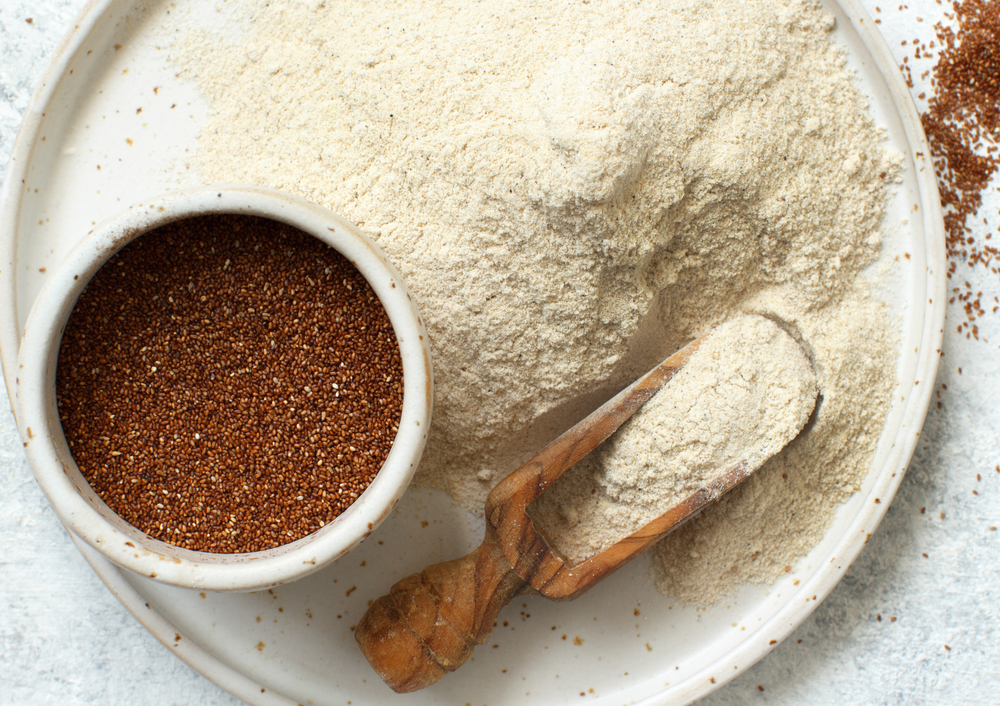I’m happy to help you with that. Reheating frozen sourdough bread can be a tricky task, but with the right techniques, you can enjoy freshly baked bread without leaving your home.
As a sourdough bread enthusiast, I have experimented with various methods to reheat frozen sourdough bread, and I’m excited to share my findings with you.

Sourdough bread is a type of bread made from a natural yeast starter, flour, water, and salt. It has a unique flavor, texture, and aroma that sets it apart from other bread types.
However, sourdough bread can be challenging to store and reheat, especially if you freeze it. Freezing can alter the bread’s texture and taste, making it dry, tough, or bland.
Therefore, it’s crucial to learn how to reheat frozen sourdough bread correctly to retain its optimal taste and texture.
Key Takeaways
- Freezing sourdough bread can alter its texture and taste.
- Preparing to reheat frozen sourdough bread is an essential step.
- Sprinkling water over the bread before reheating can help retain its moisture.
The Basics of Sourdough Bread

Understanding Sourdough
Sourdough bread is a type of bread that is made without commercial yeast. Instead, it is made using a natural starter that is created by fermenting flour and water over a period of several days.
This starter contains wild yeast and bacteria that help to leaven the bread and give it its distinctive sour flavor.
One of the key benefits of sourdough bread is that it has a longer shelf life than other types of bread.
This is because the natural acids in the starter help to preserve the bread and prevent it from going stale as quickly. Additionally, sourdough bread has a unique texture and flavor that many people find appealing.
The Importance of Proper Freezing
If you have extra sourdough bread that you want to save for later, freezing is a great option. However, it is important to freeze the bread properly to ensure that it stays fresh and flavorful.
First, make sure that the bread is completely cooled before you freeze it. This will prevent condensation from forming inside the bag or container and making the bread soggy.
Once the bread is cooled, wrap it tightly in plastic wrap or place it in an airtight container or freezer bag. This will help to prevent freezer burn and keep the bread fresh for longer.
When you’re ready to reheat the bread, it’s important to do so properly to ensure that it retains its texture and flavor. There are several methods you can use to reheat frozen sourdough bread, including using an oven, a toaster, or a microwave.
Each method has its own advantages and disadvantages, so it’s important to choose the one that works best for you.
Preparing to Reheat Frozen Sourdough Bread
When it comes to reheating frozen sourdough bread, preparation is key. Taking a few extra steps to properly thaw and preheat your oven can make all the difference in achieving that crispy crust and soft interior.
Here are some tips to get you started.
Thawing Your Bread
Before reheating your frozen sourdough bread, it’s important to let it thaw out completely. This will help prevent freezer burn and ensure that the bread retains its moisture content.
To thaw your bread, remove it from the freezer and unwrap it from any plastic or packaging. Then, wrap the bread in either aluminum foil or parchment paper to help retain moisture.
Place the wrapped bread on a baking sheet or tray and let it sit at room temperature for a few hours until it has fully thawed.
Preheating the Oven
Once your bread has thawed, it’s time to preheat your oven. The ideal temperature for reheating sourdough bread is around 350°F (175°C).
To preheat your oven, turn it on and set it to the desired temperature. Give it a few minutes to heat up before placing your bread inside. This will help ensure that the bread cooks evenly and retains its texture.
By taking the time to properly thaw and preheat your oven, you can ensure that your frozen sourdough bread comes out perfectly reheated every time.
Reheating Techniques
When it comes to reheating frozen sourdough bread, there are a few methods to choose from. Each method has its own benefits and drawbacks, so it’s important to choose the one that works best for you.
Oven Method
The oven method is the most common way to reheat frozen sourdough bread. Preheat your oven to 350°F (175°C) and wrap the bread in foil to prevent it from drying out.
Place the wrapped bread on a baking sheet and bake for 10-15 minutes. This method will help restore the bread’s crispy crust while warming the interior.
If you have a convection oven, set it to 325°F (160°C) instead. The convection setting will help evenly heat the bread without drying it out.
Toaster and Toaster Oven Methods
Toasting frozen sourdough bread is another popular option. If you have a toaster, simply pop the frozen bread slices in and toast until they are crispy and golden brown.
If you have a toaster oven, follow the same process as the oven method. Preheat your toaster oven to 350°F (175°C), wrap the bread in foil, and bake for 10-15 minutes.
Stovetop Method
If you don’t have access to an oven or toaster, you can also reheat frozen sourdough bread on the stovetop. Heat a skillet over medium heat and add a small amount of oil or butter.
Once the skillet is hot, add the frozen bread and cook for 2-3 minutes on each side, or until the bread is crispy and heated through.
No matter which method you choose, be sure to wrap the bread in foil to prevent it from drying out. Sprinkling water over the bread before reheating is also a game-changer. A gentle misting will keep your sourdough bread moist and delicious.
In summary, reheating frozen sourdough bread can be done using an oven, toaster, toaster oven, or stovetop. Each method has its own benefits and drawbacks, so choose the one that works best for you.
Remember to wrap the bread in foil to prevent it from drying out and sprinkle water over the bread before reheating to keep it moist.
Ensuring Optimal Taste and Texture

When reheating frozen sourdough bread, there are a few key factors to consider to ensure that the bread retains its optimal taste and texture. In this section, I will cover managing moisture and achieving a crispy crust, which are both crucial elements in the reheating process.
Managing Moisture
One of the most important things to keep in mind when reheating frozen sourdough bread is moisture management.
If the bread becomes too dry during the reheating process, it can negatively impact the flavor and texture. To prevent this, it is important to add moisture back into the bread during the reheating process.
One way to do this is to lightly mist the bread with water before reheating. This can be done using a spray bottle or by sprinkling water onto the bread using your fingers.
Another option is to wrap the bread in a damp towel or cloth before reheating. This will help to create steam, which will keep the bread moist and prevent it from drying out.
Achieving a Crispy Crust
In addition to managing moisture, achieving a crispy crust is also important when reheating frozen sourdough bread. A crispy crust adds texture and flavor to the bread, and can make it more enjoyable to eat.
To achieve a crispy crust, it is important to bake the bread at a low heat for a longer period of time. This will allow the bread to heat evenly and will prevent the crust from becoming too hard or burnt.
It is also important to ensure that there is proper airflow around the bread during the reheating process, as this will help to create a crispy crust.
Overall, managing moisture and achieving a crispy crust are two important factors to consider when reheating frozen sourdough bread. By following these tips, you can ensure that your bread retains its optimal taste and texture, and is enjoyable to eat.
Storing Leftovers and Preventing Waste

As a sourdough bread lover, I know how important it is to store leftovers properly to prevent waste and keep the bread fresh. Here are some tips on how to store your sourdough bread and revive stale bread.
Proper Storage Techniques
The first step to storing sourdough bread is to let it cool completely. Once it has cooled down, wrap it in plastic wrap or a clean kitchen towel. You can also use a ziplock bag to keep the bread fresh.
It’s important to store sourdough bread at room temperature or in a cool, dry place. Avoid storing it in the fridge, as the cold temperature can dry out the bread and make it stale faster. If you won’t be eating the bread within a few days, you can freeze it for later use.
Reviving Stale Bread
If your sourdough bread has gone stale, don’t throw it away just yet. There are several ways to revive stale bread and bring back its freshness.
One way to revive stale bread is to wrap it in a damp kitchen towel and place it in the oven at 350°F for 10-15 minutes. This will help to rehydrate the bread and make it soft and fresh again.
Another way to revive stale bread is to slice it and toast it in the oven or a toaster. This will give the bread a crispy texture and bring back some of its freshness.
If your sourdough bread has developed mold, it’s best to discard it to prevent any health risks. Mold can grow quickly on bread, especially in humid environments. To prevent mold growth, store your sourdough bread in a cool, dry place and avoid exposing it to moisture.
By following these storage techniques and tips for reviving stale bread, you can prevent waste and enjoy fresh sourdough bread for longer.
Frequently Asked Questions
What is the optimal temperature and time to reheat sourdough bread in an oven?
To reheat frozen sourdough bread in an oven, preheat the oven to 350°F (175°C) and place the bread on a baking sheet or tray. Cover the bread with aluminum foil to prevent it from drying out. Reheat the bread for 15-20 minutes or until it is heated through.
If using a convection setting, set it around 325°F (160°C) instead. This temperature allows for even heating without drying out your precious loaf. Here is a source that provides more detailed instructions.
Can you reheat sourdough bread in a microwave, and if so, how?
Yes, you can reheat sourdough bread in a microwave, but it’s not the best method. It can cause the bread to become chewy or tough. If you must use a microwave, wrap the bread in a damp paper towel and microwave it on a low setting for 10-15 seconds at a time until it is heated through.
Be careful not to overheat the bread, or it will become too hard. This source provides more information about reheating sourdough bread in a microwave.
What are the steps to defrost sourdough bread without compromising its quality?
To defrost frozen sourdough bread without compromising its quality, remove the bread from the freezer and place it on a wire rack at room temperature. This allows the bread to thaw slowly, preventing moisture loss and maintaining its texture.
Once the bread has thawed, preheat the oven to 350°F (175°C) and reheat the bread for 15-20 minutes or until it is heated through. This source provides more detailed instructions.
Is it possible to refresh sourdough rolls using an air fryer, and what is the method?
Yes, it is possible to refresh sourdough rolls using an air fryer. Preheat the air fryer to 350°F (175°C) and place the rolls in the basket. Spray the rolls with a little water to prevent them from drying out.
Air fry the rolls for 3-5 minutes or until they are heated through and crispy. This source provides more information about using an air fryer to refresh sourdough rolls.
How long does sourdough bread maintain its quality when frozen?
Sourdough bread can be stored in the freezer for up to 3 months without losing its quality. After 3 months, the bread may become stale or lose its flavor. This source provides more information about storing sourdough bread in the freezer.
Does the process of freezing affect the texture or taste of sourdough bread?
Yes, the process of freezing can affect the texture and taste of sourdough bread. Freezing can cause the bread to become slightly dry and lose some of its flavor.
To prevent this, wrap the bread tightly in aluminum foil or plastic wrap and store it in an airtight container or freezer bag with as much air removed as possible. This source provides more information about freezing sourdough bread.







